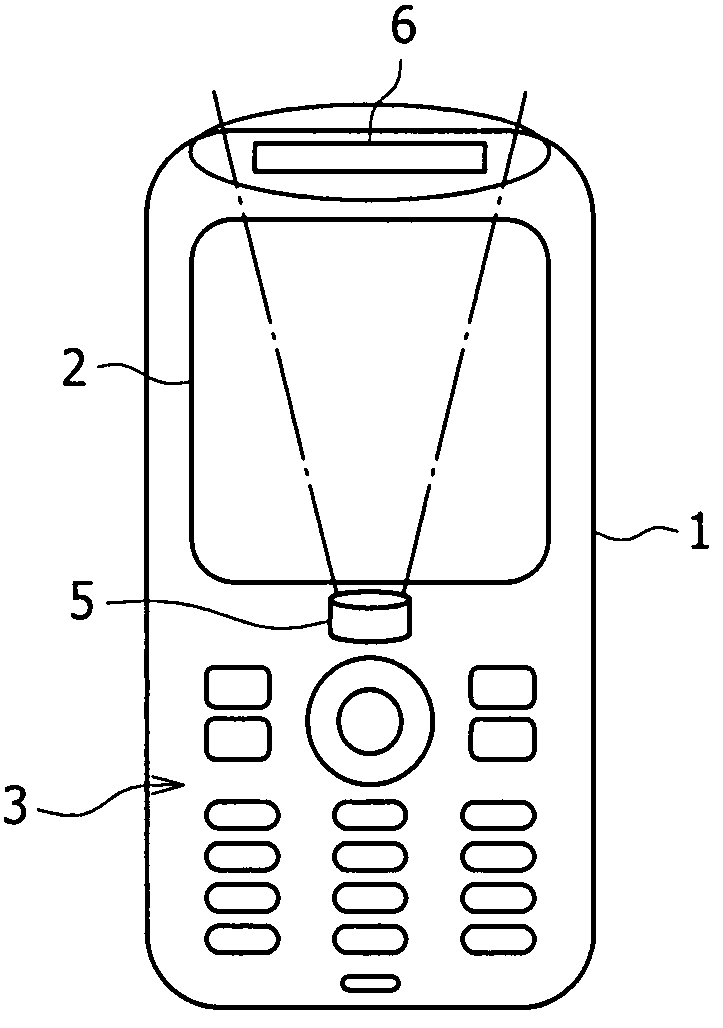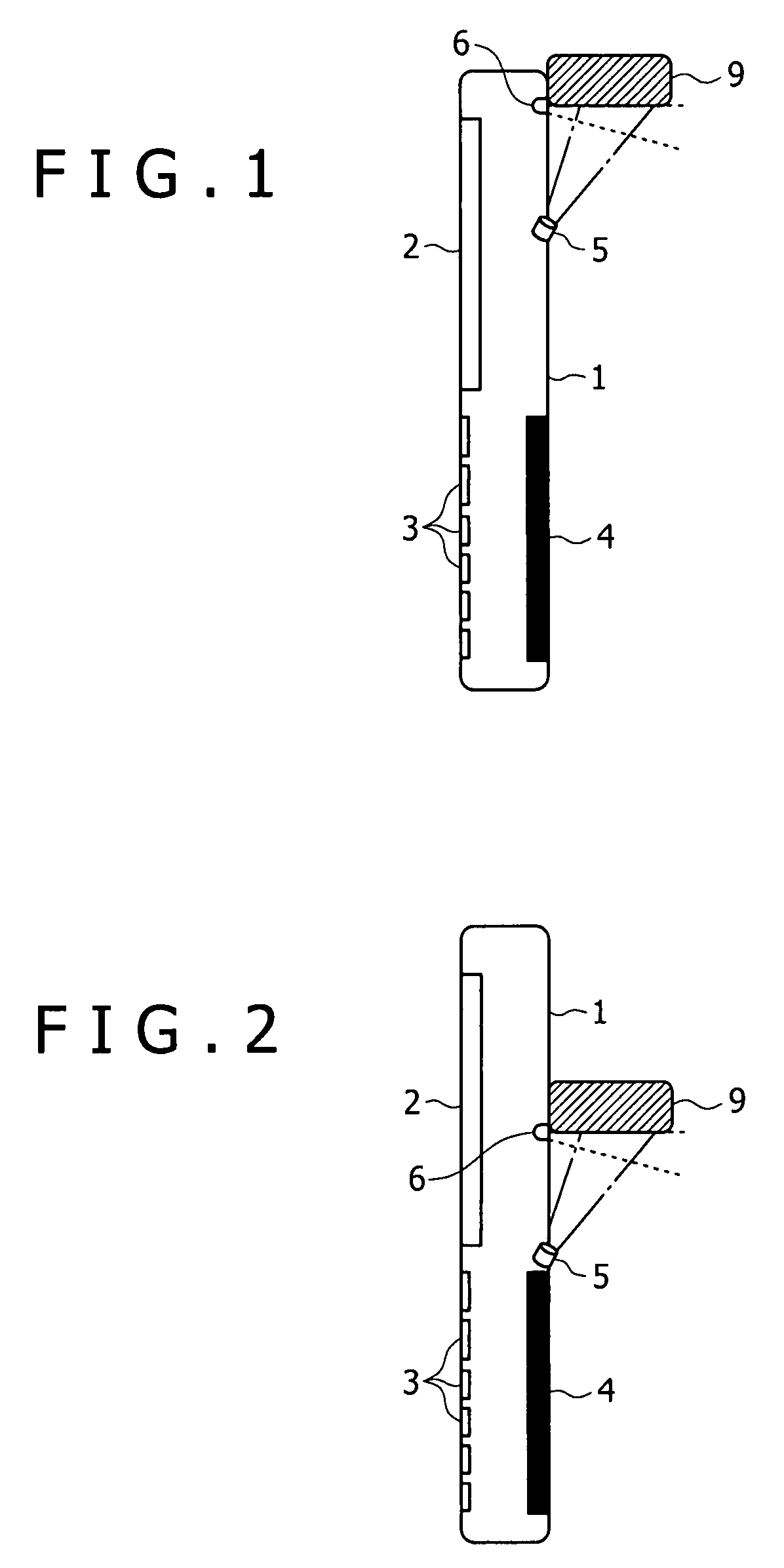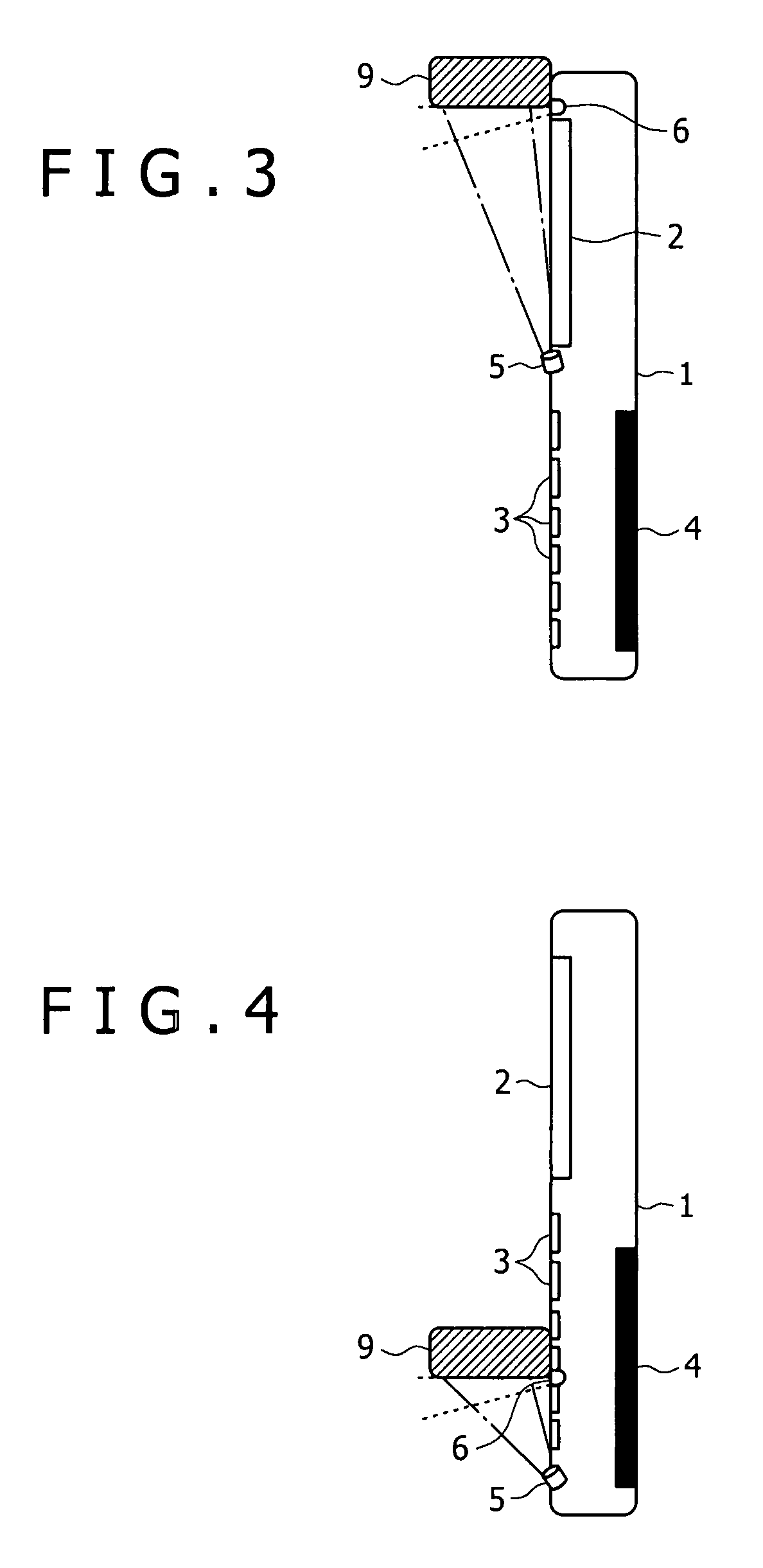Image capture apparatus and biometric authentication apparatus
a biometric authentication and image capture technology, applied in the field of image capture apparatus and biometric authentication apparatus, can solve the problems of inability to obtain good imaged images, inability to capture incident light, and limited depth of field, so as to achieve accurate and easy authentication of a specific user, the effect of suppressing the variation of distan
- Summary
- Abstract
- Description
- Claims
- Application Information
AI Technical Summary
Benefits of technology
Problems solved by technology
Method used
Image
Examples
Embodiment Construction
[0061]One embodiment of an image capture apparatus and biometric authentication apparatus will be described with reference to the accompanying drawings.
[0062]In the present embodiment, while a camera-enabled mobile phone terminal is contemplated as one embodiment of the image capture apparatus and biometric authentication apparatus, the present invention is not limited thereto in any way.
Layout Configuration of First Practical Example
[0063]FIG. 1 shows a layout of a first practical example of an image capture apparatus or a camera section 5 and an illumination unit or a light section 6 that are disposed to a housing of a camera-enabled mobile phone terminal 1 in accordance with an embodiment of the present invention. In order to facilitate understanding of the arrangement of respective component elements, FIG. 1 depicts the state of the mobile phone terminal 1 as partly perspectively viewed from the lateral side. FIGS. 2 to 14, 16, 17, 19 to 24, 26, 27, 29, and 30 to be referenced b...
PUM
 Login to View More
Login to View More Abstract
Description
Claims
Application Information
 Login to View More
Login to View More - R&D
- Intellectual Property
- Life Sciences
- Materials
- Tech Scout
- Unparalleled Data Quality
- Higher Quality Content
- 60% Fewer Hallucinations
Browse by: Latest US Patents, China's latest patents, Technical Efficacy Thesaurus, Application Domain, Technology Topic, Popular Technical Reports.
© 2025 PatSnap. All rights reserved.Legal|Privacy policy|Modern Slavery Act Transparency Statement|Sitemap|About US| Contact US: help@patsnap.com



